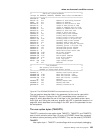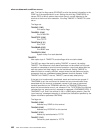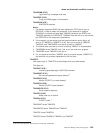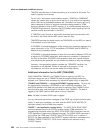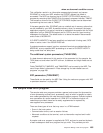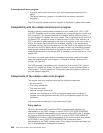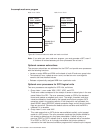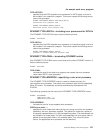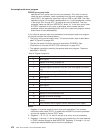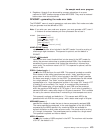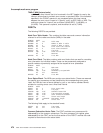Routing mechanism
The routing mechanism invokes the appropriate error processor depending on the
error code provided by the node abnormal condition program.
Groups of one or more error codes are defined in the DFHSNEP macro (see
below). Each group is associated with an index (in the range X'01' through X'FF')
and an error processor. A translate table is generated and the group index is placed
at the appropriate offset for each error code. Error codes not defined in groups
have a zero value in the table. An error processor vector table (EPVT) contains the
addresses of the error group processors, positioned according to their indexes. The
vector table extends up to the maximum index defined; undefined intermediate
values are represented by zero addresses.
The error code is translated to obtain the error group index. A zero value causes
the node error program to take no further action; otherwise the index is used to
obtain the address of the appropriate error processor from the EPVT. A zero
address causes the node error program to take no further action; otherwise a call is
made to the error processor. This is entered with direct addressability to the NET
and CSVT areas. When the error processor has been executed, the node error
program returns control to the node abnormal condition program.
Node error table
The node error program may use a node error table (NET) that comprises the node
error blocks (NEBs) used to maintain error status information for individual nodes
(see Figure 26 on page 468). Some or all of the NEBs can be permanently reserved
for specific nodes; others are dynamically assigned to nodes when errors occur.
Dynamically assigned NEBs are used exclusively for the nodes to which they are
assigned until they are explicitly released. All the NEBs have an identical structure
of error status blocks (ESBs). Each ESB is reserved for one error processor and
associated with it by means of the appropriate error group index. The ESB length
and format can be customized to the particular error processor that it serves.
the sample node error program
Chapter 9. Writing a node error program 467





